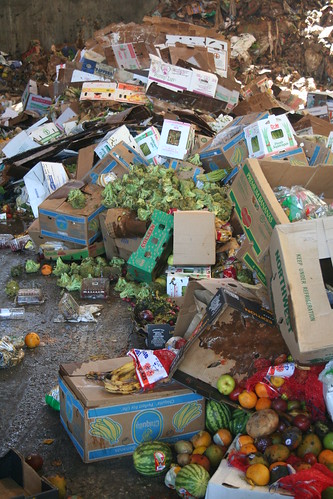How much food are you throwing away?
We throw away one third of our food’, I read in the newspaper. A calculation made by the Food and Agriculture Organization of the United Nations (FAO). One third! And that was not all I was amazed about.
During my Science Communication workshops I always stress to the researchers the importance of being concrete in their presentation or publication. After all, no one would want their readers or viewers to miss out on their message.
Quite the challenge for any scientist, being concrete. In all your years of work you’ve trained yourself to think abstractly and deliver precise work. Just the thought of rounding off after the comma sends shivers down your spine. And now you’re being expected to be concrete?
Let me give you an example. Every year, 10 million tons of edible waste are being produced worldwide. Are you at all bothered by this? Not really. Although, on hearing that this is one third of all food produced globally, your stomach may actually begin to churn.
The trick is not only in rounding off your digits, as the figure 10 million tons has already been rounded off. But to actually translate this information into something your audience can grasp and form a mental picture of.
Hungry for more?
Check out this FAO report for more enjoyable comparisons.
Any guesses as to how much water was needed to have produced all that wasted food? 66,000 gallons (250km3), or three times the total volume of Lake Geneva, one of the largest lakes in Western Europe. Pretty enormous, right?
This translates to a CO2-emission of 3.3 gigatons, giving food waste the bronze medal as the third largest emitter of CO2, just dangling behind the United States and China.
Why does one third of all food never end up on our plates?
British food activist Tristram Stuart provides us with a very concrete answer in his TED talk.
He has salvaged a package of cookies from a supermarket waste container. He holds up nine cookies. ‘Imagine this being the amount of food we globally produce’, he exclaims.
The first cookie goes to waste out on the field, due to a shortage of transportation and conservation facilities in the southern hemisphere.
Three cookies go towards cattle feed. Of those, two are lost in the form of faeces and heat emission. Only one remains, in the form of meat for consumption.
Ultimately, two cookies are discarded as waste by the supermarket and only four out of the nine original cookies remain. Far from efficient, Tristram remarks.
Did you follow closely?
According to Stuart, we throw away nearly half of our food, in contrast to the FAO only mentioning ‘one third’. Stuart, however, refers to consumption figures in the Western world, where we are doing even a far worse job than the global average.
Can we do anything about it?
Of course! Tristram Stuart urges us to especially sound the alarm bell at our supermarkets. In Great Britain you will already find supermarket stands containing ‘ugly fruits and vegetables’. Just as delicious, yet cheaper. And much less waste.
Will concrete communication eradicate world hunger?
Let’s not over-simplify matters. But the examples communicated by the FAO and Tristram Stuart do show that in concrete communication lies the real power in bringing your message across.
Photo credit food: iBloom
PS: want to know more about how wasting food hurts the environment? Check out this article.
